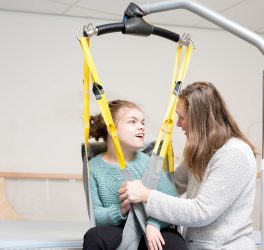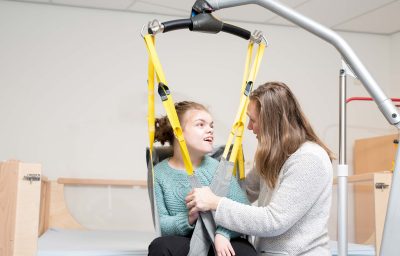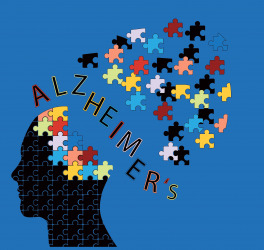
As the U.S. population ages, the number of people receiving long-term services and supports in their own home has grown, including the use of self-directed care. Self-directed care enables long-term care recipients to hire and manage their own workers, rather than using a home care agency. The COVID-19 pandemic increased the strain this industry.
New research from the University of Kansas shows that consumers shouldered as many responsibilities as typical home care employers, often with little added resources and many barriers in the way. Policies allowing more flexibility could help consumers address challenges raised by worker shortages and budget constraints, according to the researchers.
A KU research team received $646,620 from the U.S. Department of Health and Human Services to study how the pandemic affected Medicaid-funded Home and Community-Based Services, known as HCBS. In their first published study from the project, researchers conducted 54 in-depth interviews with home- and community-based services consumers, direct support workers, family caregivers and providers in Kansas. They found worker shortages, low wages and increased employer responsibility placed on consumers contributed to unmet care needs, stress and negative health outcomes. While some government flexibility helped address those issues, more flexibility is needed, the authors write.
The study, published in the Journal of Applied Gerontology, was written by Carrie Wendel-Hummell, director of the Center for Research on Aging and Disability Options in KU’s School of Social Welfare; Tracey LaPierre, associate professor of sociology; Darcy Sullivan and Jennifer Babitzke, graduate research assistants in sociology at KU; Lora Swartzendruber, research project coordinator in social welfare; Tobi Barta, master’s in social work research scholar; and Danielle Olds of Saint Luke’s Hospital.
“Self-directed care is meant to put the autonomy in people’s hands. You have a caregiver coming into your home, and you want to be able to trust the person who’s giving that care and helping you with very intimate tasks in many cases,” Wendel-Hummell said. “We found instances where people couldn’t find anyone to interview because of workforce shortages. There were instances where they wanted someone to wear a mask or be vaccinated, but they weren’t able to find people who met those standards.”
Those challenges were among the four main themes the study uncovered. First, preexisting workforce shortages were exacerbated by the pandemic. Some who worked in the field left due to COVID-19 safety concerns, and wages remained stagnant, researchers said. The workers also did not have access to insurance or paid leave, which became more important during the pandemic.
A second major theme highlighted how self-directed consumers assume much of the responsibility of employers without any added resources. While home care agencies could pool organizational resources or access CARES Act or ARPA funds, self-directed care consumers could not access similar funds to improve worker pay or benefits. The state of Kansas did access emergency funds to provide PPE to self-directed consumers, but this was not always enough, and many self-directed consumers or workers paid for PPE out of their own pockets, researchers found. Self-directed consumers also had other out-of-pocket expenses, such as advertising for help, performing background checks on potential hires or paying for gas for workers who provided transportation-related services.
Appendix K provided federal guidelines that allowed state Medicaid authorities to temporarily adjust HCBS rules and regulations during emergency situations. This allowed some flexibility and demonstrated the potential to alleviate unmet care needs, the study found, but didn’t go far enough. For example, the policy allowed consumers to hire family members to address care gaps who previously were not eligible. However, hiring family members was not possible or ideal for everyone. Also, while Appendix K allowed paid family members to reinvest their wages into consumer care, the regulations were “surrounded by confusion and not always well communicated,” the authors wrote.
The final theme showed that structural constraints adversely affected caregiver, worker and consumer outcomes. The burden on caregivers and workers increased in response to pandemic conditions and workforce shortages. Those challenges limited consumer self-determination, which in effect defeats the purpose of self-directed care, Wendel-Hummell said. Ultimately, that led to unmet care needs, such as falls while using the bathroom and even a death when a caregiver could have been in the home if not for shortages.
“There’s the increased depression and anxiety that I have, skin breakdowns and pressure sores, and those kind of things I didn’t really have to deal with that much before,” one consumer told the research team.
The authors wrote that policy could go a long way toward addressing the challenges. The potential shown by Appendix K was evidence of that. The study was based in Kansas, but many states have similar challenges, especially those that have not expanded Medicaid, researchers said. Medicaid expansion would help provide health care coverage for many of these low-wage workers. Legislative approval is necessary to increase wages or provide benefits for the Medicaid-funded home and community-based services workforce, researchers said. A pay increase to keep pace with other industries that are considered entry-level work, as well as budget authority to provide a pool of money to cover consumer costs incurred by the pandemic and to improve hiring, would assist in addressing those challenges, as would providing health insurance, paid leave and other benefits, the authors wrote as part of their recommendations.
In addition to alleviating pandemic-related needs, the researchers said such policies could address ongoing direct care workforce issues.
“If anything, these challenges are growing because we have new disabilities due to COVID, an aging population and more hesitancy about entering long-term care facilities because of increased concern of contracting COVID-19,” LaPierre said. “People want to be able to receive care in their own homes.”








